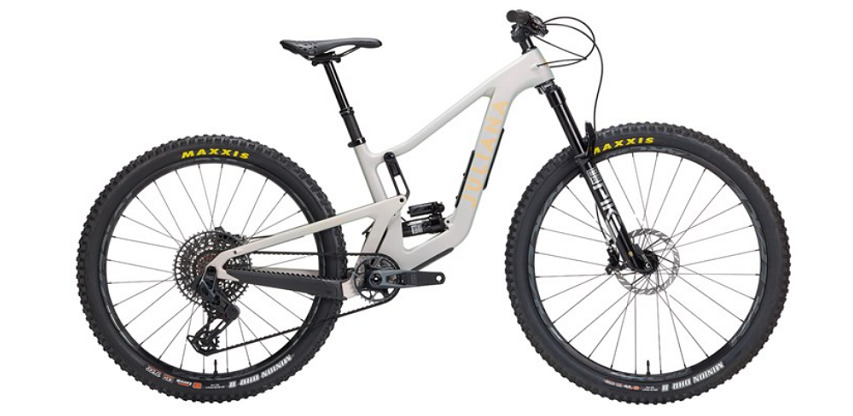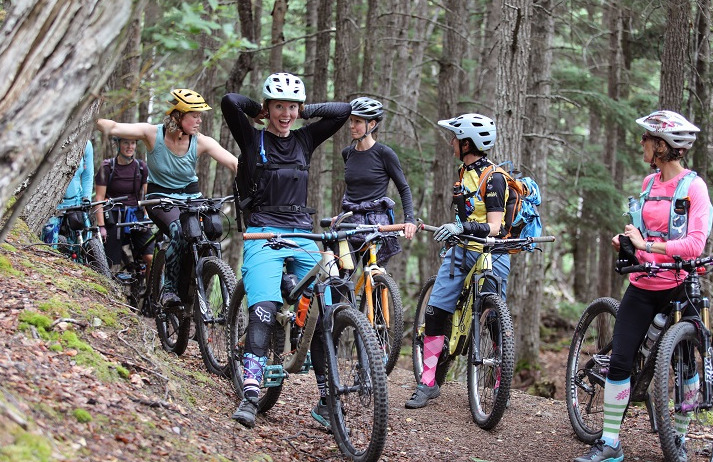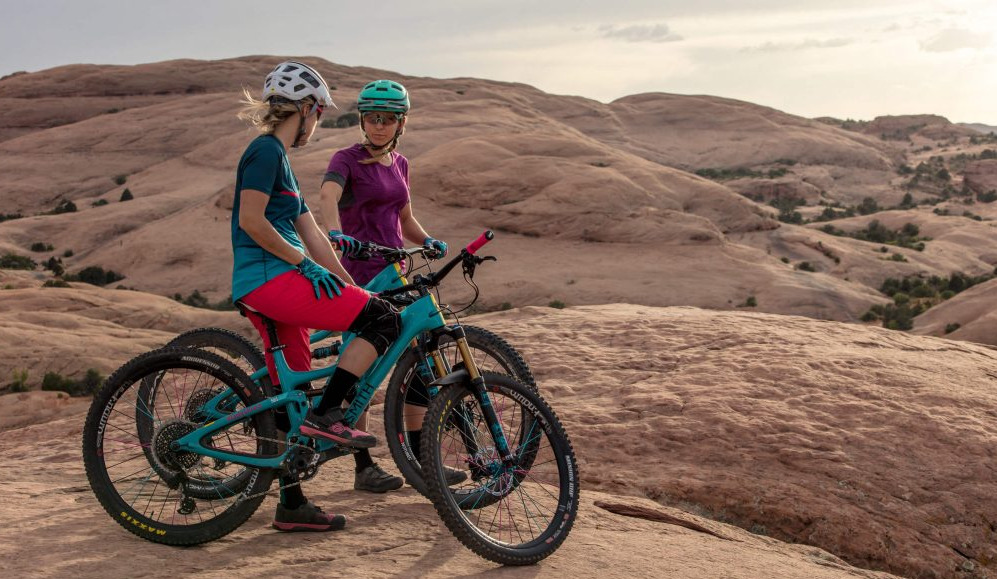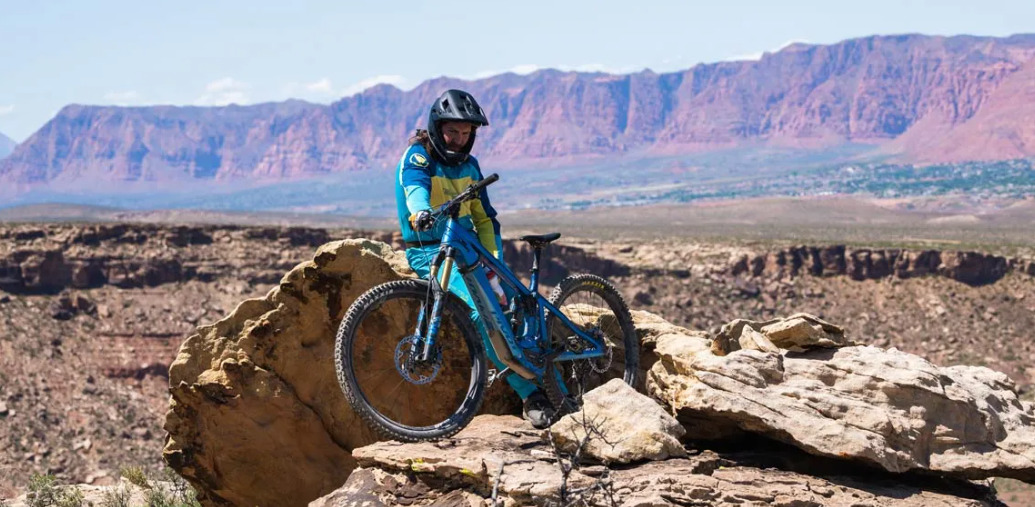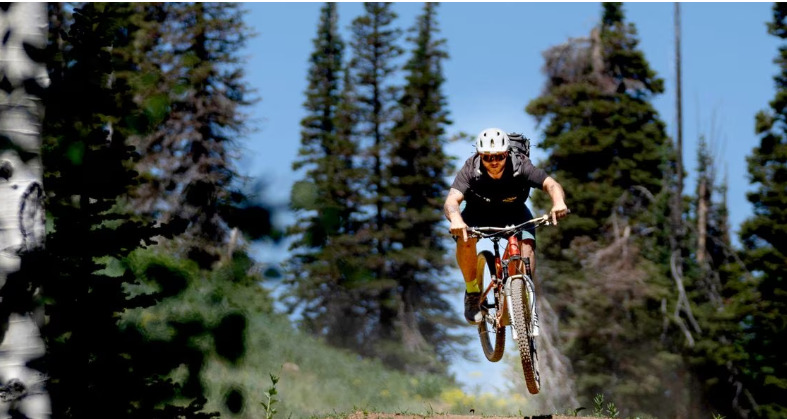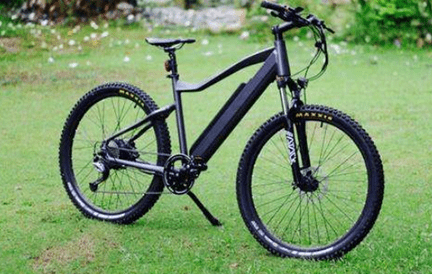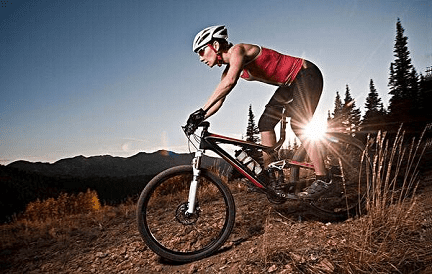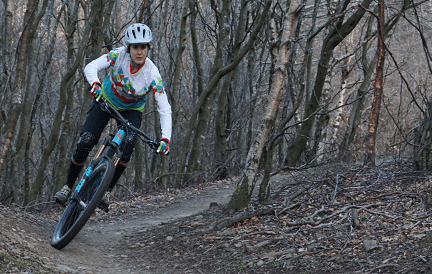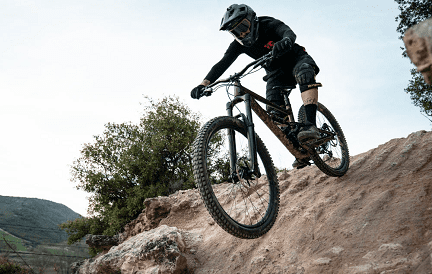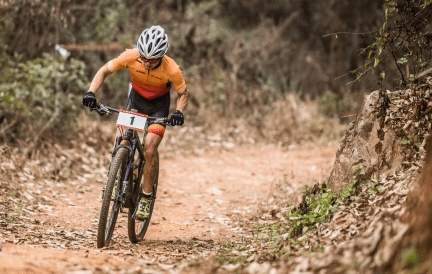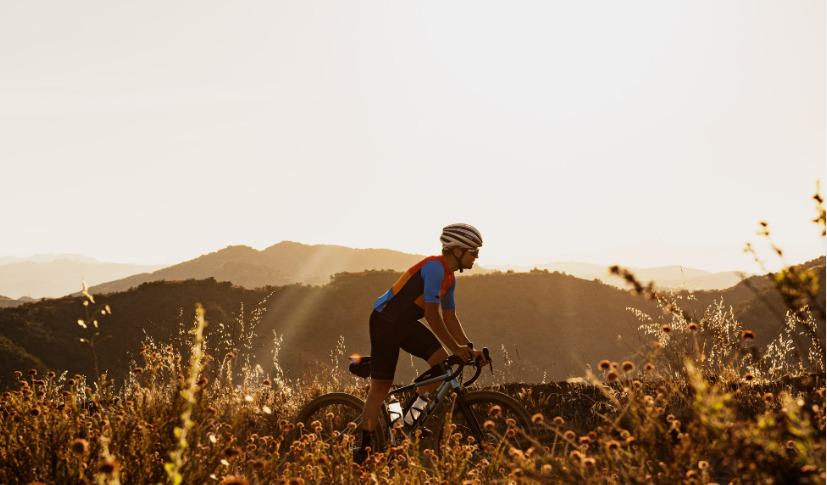
Discover the exhilarating world of off-road cycling through the lens of full suspension mountain bikes, the game-changers in the realm of adventurous riding. This comprehensive guide offers an accessible window into the universe of these high-performance machines, providing insights into their structure, versatility, benefits, unique features, comparisons with hardtail bikes, recommended models, care tips, and more.
Mountain biking has steadily gained momentum as the go-to outdoor activity for thrill-seekers and nature enthusiasts alike. While hardtail mountain bikes, known for their front suspension, have been a trusty companion for many riders, full suspension mountain bikes have taken the off-road experience to new heights.
Unveiling the Inner Workings of Full Suspension Mountain Bikes
Full suspension mountain bikes are not just tools for conquering challenging trails; they are mechanical marvels that have undergone a continuous evolution to offer riders an unmatched off-road experience. In this comprehensive exploration, we will delve into the intricate anatomy of these cutting-edge machines, revealing how each component works in harmony to elevate your mountain biking adventures.
The Backbone: Frame
At the core of every full suspension mountain bike lies its frame, often crafted from lightweight materials such as aluminum, carbon fiber, or robust steel. This frame is meticulously engineered to strike a balance between stability and agility, ensuring it can handle even the most unforgiving terrains while responding seamlessly to the rider’s commands.
Front-End Comfort: Suspension Fork
The front suspension fork is the first line of defense against rough terrain. It incorporates hydraulic or air-based dampers to absorb shocks, delivering a smoother and more controlled ride. This component allows riders to tackle uneven trails with confidence, maintaining traction and steering precision.
Rear Resilience: Rear Suspension System
The hallmark of full suspension mountain bikes is their rear suspension system, a dynamic duo that teams up with the front fork to provide superior traction, control, and comfort. The rear suspension, often accompanied by a shock absorber, adapts to varying terrains, enabling riders to confidently tackle steep descents, technical climbs, and obstacles of all kinds.
Traction Masters: Wheels and Tires
The wheels and tires are your connection to the trail. These mountain bikes often feature larger wheels, typically 27.5 or 29 inches in diameter, for smoother rolling over rugged terrain. Paired with wide, knobby tires, they ensure optimal grip and stability. Many riders opt for tubeless setups to reduce puncture risks and maintain consistent performance in demanding conditions.
Control and Safety: Braking System
Safety and control are paramount, and the disc braking system delivers both. With options for hydraulic or mechanical variants, these brakes offer reliable stopping power in all weather conditions. This critical component ensures that riders can confidently navigate steep descents and maintain control during challenging maneuvers.
Powerhouse: Drivetrain
The drivetrain is the beating heart of the bike, featuring an array of gears, derailleurs, and shifters. Its primary responsibility is to convert your pedaling effort into forward motion. Modern drivetrains come in various configurations, emphasizing efficiency and precise shifting, enabling riders to seamlessly adapt to diverse terrains.
Diverse Categories of Full Suspension Mountain Bikes
Full suspension mountain bikes encompass a broad spectrum of options, each finely tuned to excel in specific terrains and cater to the unique preferences of riders. These bikes are categorized into distinct types, each designed to provide a specialized and thrilling riding experience. Let’s take a deep dive into the world of full suspension mountain bikes and explore the various types available. This exploration will empower you to understand the distinct attributes of each type and choose the one that aligns perfectly with your cycling goals.
Trail Bikes: Versatility in Motion
Trail bikes are the Swiss Army knives of mountain biking, offering versatility that allows riders to tackle a wide range of trail conditions with ease. They strike a harmonious balance between climbing efficiency and downhill performance. Sporting moderate suspension travel, versatile geometry, and a comfortable riding position, trail bikes are ideal companions for all-day adventures. Whether you’re navigating technical descents, exploring meandering singletracks, or embarking on epic long-distance rides, these bikes provide the adaptability and comfort needed to conquer diverse terrains.
Enduro Bikes: Dominance on the Descents
Enduro bikes are the bruisers of the mountain biking world, purpose-built to dominate aggressive downhill riding and challenging descents. These specialized machines boast extended suspension travel, robust construction, and aggressive geometry. While they excel in tackling technical trails and absorbing hard impacts, enduro bikes are known for their surprising uphill prowess, making them a popular choice among thrill-seekers who relish the balance between uphill challenges and adrenaline-pumping descents.
Downhill Bikes: Speed and Precision
Downhill bikes are all about one thing: extreme speed and precision in descents. These dedicated machines feature exceptionally long suspension travel, sturdy frames, and geometry that is optimized for high-speed stability. While they are unmatched in downhill performance, downhill bikes are not suited for climbing and are typically reserved for dedicated downhill parks and racing circuits.
Cross-Country Bikes: Racing and Exploration
Cross-country (XC) bikes are the thoroughbreds of mountain biking, designed for speed, efficiency, and endurance. These lightweight frames, coupled with shorter suspension travel and efficient geometry, make XC bikes the top choice for racers and riders who seek long-distance adventures. They excel in climbing and acceleration, making them perfect for those who aim to compete in races or explore extensive trail networks without compromising on speed.
All-Mountain Bikes: Versatile Trail Explorers
All-mountain bikes offer a balanced and versatile riding experience that bridges the gap between trail and enduro bikes. These bikes feature well-rounded suspension travel, versatile geometry, and adaptability across a range of terrains. Whether you’re navigating technical sections, conquering steep climbs, or descending challenging trails, all-mountain bikes are the versatile companions for riders who crave exploration without sacrificing performance.
In a world of full suspension mountain bikes, these diverse categories offer riders a spectrum of choices, each tailored to suit specific riding preferences and terrains. Your ultimate adventure begins with selecting the type of bike that matches your style and inspires you to conquer new horizons.
Revealing the Benefits of Full Suspension Mountain Bikes
1. Enhanced Comfort on Rough Terrain
- The dual suspension system, composed of a front fork and rear shock, serves as your ultimate comfort cushion, absorbing shocks and vibrations from the most uneven and challenging trails.
- Reduced rider fatigue means that even long rides become significantly more comfortable and less physically demanding, allowing you to explore new territories without feeling beat up.
- The plush and cushioned ride quality encourages riders to take on more demanding trails, fostering a sense of adventure while ensuring the utmost comfort.
2. Superior Traction and Control
- Full suspension bikes excel in maintaining tire contact with the ground, offering superior traction even on slippery or technically demanding terrain.
- This enhanced traction translates into unrivaled control, especially when tackling tight corners, daunting climbs, and exhilarating descents.
- Riders can confidently navigate obstacles, maintaining control, reducing the risk of accidents, and pushing the boundaries of their off-road prowess.
3. Confidence-Boosting Performance
- The heart of a full suspension bike is its ability to instill unwavering confidence in riders, empowering them to push their limits and explore uncharted territories.
- The suspension systems work diligently to absorb impacts from unforgiving elements like rocks, roots, and drops, enabling riders to tackle even the most challenging technical sections with grace and ease.
- With full suspension under you, you can venture forth on your mountain biking adventures without hesitation, knowing your bike is prepared to meet the demands of the trail.
4. Acceleration and Speed
- Full suspension bikes deliver remarkable power transfer, thanks to their improved traction and control, leading to faster acceleration and the ability to maintain higher speeds on descents and technical sections.
- Whether you’re seeking an adrenaline rush on thrilling downhill runs or looking to outpace your competition in cross-country races, the added speed potential of full suspension bikes is a game-changer.
5. Precise Handling and Responsiveness
- The sophisticated suspension systems found on these bikes optimize your contact with the ground, enhancing stability and responsiveness.
- You can confidently and precisely navigate tight switchbacks, negotiate treacherous rock gardens, and handle challenging technical features with finesse.
- The bike’s agility and responsiveness cater to a wide range of riding styles and terrains, ensuring that you can conquer any trail with grace and skill.
6. Versatility for Varied Riding Styles
- Full suspension mountain bikes come in a variety of types, each tailored to specific riding styles, from the lightning-fast world of cross-country racing to the exhilarating realm of downhill adventures.
- Riders can select a bike that perfectly aligns with their preferences, whether they prioritize speed, comfort, or technical prowess.
- The versatility of these bikes ensures that you can explore an extensive range of trails and terrain types, truly embracing the spirit of off-road cycling.
In summary, full suspension mountain bikes offer a compelling array of benefits that go beyond enhancing your off-road adventures. They provide a gateway to exhilarating experiences, unmatched comfort, and the confidence to push the boundaries of your riding skills. Whether you’re navigating technical descents, embarking on lengthy cross-country journeys, or dominating downhill courses, full suspension bikes have the versatility and performance to make your mountain biking dreams a reality.
Crucial Factors to Evaluate When Purchasing a Full Suspension Mountain Bike
Choosing the ideal full suspension mountain bike is a pivotal decision for riders at every level of experience. To ensure that your chosen bike aligns seamlessly with your riding preferences and aspirations, it’s paramount to meticulously assess a range of key features. In this guide, we explore the essential aspects you should consider when investing in a full suspension mountain bike:
1. Frame Material and Design
- Frame material choices, such as aluminum, carbon fiber, or steel, substantially affect the bike’s weight, strength, and overall performance.
- The frame’s design and geometry are integral to determining the bike’s handling characteristics and suitability for specific terrains. Frame geometry can influence factors like stability, agility, and how well the bike tackles obstacles.
2. Suspension Travel
- Suspension travel, or the distance the front fork and rear shock can compress, has a significant impact on the bike’s performance.
- Consider the type of riding you plan to undertake; greater suspension travel is well-suited for handling technical descents with finesse, while less travel translates to greater efficiency for climbing and cross-country riding.
3. Wheel Size
- Wheel size is a pivotal factor that profoundly influences a bike’s performance. Common options include 27.5 inches and 29 inches.
- Delve into how different wheel sizes affect the bike’s rolling efficiency, handling characteristics, and overall stability, particularly in the context of the specific trails you intend to explore.
4. Braking System
- Full suspension mountain bikes are typically equipped with disc brakes, which come in hydraulic and mechanical variations.
- Assess the braking system’s performance, taking into consideration elements such as stopping power, modulation (the ability to control braking force), and durability. These factors significantly impact your safety and control on the trails.
5. Drivetrain and Gear Range
- Whether you prioritize speedy descents, efficient climbs, or a combination of both, the drivetrain should cater to your specific needs.
6. Price Range
- Define a budget that aligns with your financial considerations and the features you prioritize in your mountain bike.
- Be prepared to strike a balance between cost and performance, focusing on components and features that hold the most significance in enhancing your overall riding experience.
By thoughtfully evaluating these key features, you can streamline your selection process and find a full suspension mountain bike that resonates with your riding style, preferences, and performance expectations. Each feature plays a pivotal role in shaping the bike’s capabilities and overall performance, ensuring an engaging and satisfying journey on the trails.
Full Suspension vs. Hardtail Mountain Bikes: Making the Right Choice
The decision between a full suspension and a hardtail mountain bike is pivotal in shaping your off-road cycling adventures.
1. Suspension System
- Full Suspension: Full suspension bikes boast both front and rear suspension systems, offering a multitude of advantages such as enhanced comfort, traction, and control on rough and technical terrain. The rear suspension ensures a smoother ride over obstacles, reducing rider fatigue.
- Hardtail: On the other hand, hardtail bikes feature only front suspension. The simplicity of this design often results in a lighter overall weight, making hardtails efficient climbers, ideal for those who favor ascending challenges.
2. Comfort and Control
- Full Suspension: Full suspension bikes excel in absorbing shocks and vibrations, leading to a plush and comfortable ride, particularly on demanding trails. The increased traction and control provide riders with the confidence to tackle obstacles and descents with ease.
- Hardtail: Hardtail bikes offer a more direct and connected feel with the trail. This can be appreciated by riders who seek precise control and immediate feedback from the terrain, enhancing their handling skills.
3. Efficiency and Climbing
- Full Suspension: While full suspension bikes provide a host of benefits, they may sacrifice some climbing efficiency due to the added weight and the phenomenon known as “suspension bob,” where energy is lost in the suspension system during pedaling.
- Hardtail: Hardtail bikes shine in climbing efficiency, making them a preferred choice for cross-country riders and those who prioritize the ascent. The lack of rear suspension simplifies power transfer to the pedals.
4. Terrain Versatility
- Full Suspension: Full suspension bikes are incredibly versatile and can handle a wide range of terrains, from technical descents to rugged trails. They excel in providing comfort and control across diverse conditions.
- Hardtail: Hardtail bikes are well-suited for less aggressive trails and cross-country riding, making them a popular choice for riders who prioritize speed and efficiency on smoother terrain.
5. Maintenance and Simplicity
- Full Suspension: Full suspension bikes typically require more maintenance due to their complex suspension systems, which have more moving parts. Regular maintenance is essential to keep them in peak condition.
- Hardtail: Hardtail bikes are lauded for their simplicity, featuring fewer moving parts and thus demanding less maintenance. This can be a significant advantage for riders seeking a low-maintenance bike.
6. Cost Considerations
- Full Suspension: It’s essential to acknowledge that full suspension bikes are generally more expensive due to their additional components and advanced technology. This should be considered when determining your budget.
- Hardtail: In contrast, hardtail bikes are often more budget-friendly, making them an attractive option for riders who have financial constraints but still desire a reliable and enjoyable mountain biking experience.
7. Riding Style and Preferences
- Encourage riders to reflect on their individual riding style, preferences, and the type of trails they frequent. The choice between full suspension and hardtail should align with these personal factors and their unique riding objectives.
Both full suspension and hardtail mountain bikes have their rightful places in the world of mountain biking, catering to diverse preferences and riding objectives. The ultimate choice comes down to aligning your bike with your individual aspirations and the type of terrain you’re passionate about exploring.
Accessories and Gear for Full Suspension Mountain Biking
When embarking on full suspension mountain biking adventures, having the right accessories and gear is essential for safety, comfort, and performance. Here’s a breakdown of the key accessories and gear categories along with some examples:
Protective Gear:
- Helmets: Your first line of defense in case of falls or impacts. Full-face helmets provide comprehensive protection for your head, while trail helmets offer a balance of protection and ventilation.
- Body Armor: This gear protects your chest, back, and limbs. Chest protectors shield your torso, while knee and elbow pads safeguard your joints during falls or collisions.
- Gloves: Providing grip and protection for your hands, full-fingered gloves with knuckle guards are essential to ensure your hands stay unscathed.
- Goggles/Glasses: Protect your eyes from flying debris and harmful UV rays with goggles or glasses. Look for options with anti-fog and UV protection features for clear vision.
- Shin Guards: Prevent injuries from pedal strikes and impacts on your shins. Look for lightweight, breathable shin guards that won’t hinder your movement.
- Neck Braces: Designed to support your neck and minimize the risk of injury, adjustable neck braces offer comfort while enhancing your safety during challenging rides.
Cycling Apparel:
- Jerseys: Moisture-wicking and breathable, jerseys help regulate your body temperature and keep you dry. Consider both short and long-sleeve options for various weather conditions.
- Shorts/Pants: These durable bottoms come with padding to enhance saddle comfort. Padded shorts or baggy riding pants are popular choices for full suspension riders.
- Gloves: Apart from protecting your hands, cycling gloves enhance grip and overall comfort. Look for lightweight, moisture-wicking options to keep your hands dry.
- Socks: High-performance, moisture-wicking socks play a crucial role in maintaining dry and comfortable feet, even during long and demanding rides.
- Footwear: Sturdy and grippy shoes are essential for maintaining pedal control and rider safety. Depending on your preference, choose between clipless or flat pedal mountain biking shoes.
- Jackets: Designed to withstand varying weather conditions, windproof and waterproof jackets provide the protection you need when Mother Nature doesn’t cooperate. Look for options that are packable and breathable for added convenience.
Accessories:
- Hydration: Staying hydrated on the trails is vital. Hydration packs offer easy access to water while riding, while water bottles provide a simple and lightweight alternative.
- Tools: Carry essential tools for on-the-trail bike repairs. Multi-tools, tire levers, and pumps ensure you can address minor issues and continue your ride.
- Bike Lights: Bike lights are essential for safety when riding in low-light conditions or at night. Both front and rear LED bike lights increase visibility and reduce the risk of accidents.
- GPS/Navigation: For route planning and tracking, bike-specific GPS devices and apps help you navigate new trails, record your progress, and share your achievements.
- Bike Racks: When transporting your bike to different trails, bike racks, whether hitch-mounted or roof-mounted, make the process convenient and secure.
- Trail Repair: Kits for fixing punctures and minor issues are a must. Items like tube patches, tire boots, and chain tools ensure you can handle unexpected problems on the trail with ease.
Choosing the right protective gear, cycling apparel, and accessories is crucial for a successful and enjoyable full suspension mountain biking experience. Selecting items that align with your riding style, preferences, and the specific challenges you’ll face on the trails is essential for your safety, comfort, and overall satisfaction.
Conclusion
In the world of off-road cycling, the full suspension mountain bike stands as a symbol of adventure, versatility, and uncompromising performance. As we’ve ventured through this comprehensive guide, we’ve unveiled the intricate details that make these high-performance machines exceptional in every sense. From the anatomy of full suspension bikes to their diverse types, advantages, and key features, it’s clear that these two-wheeled marvels have revolutionized the way riders conquer rugged terrains.
With a full suspension mountain bike, riders are equipped with the tools needed to take on the most challenging trails and conquer nature’s obstacles. The dual suspension system, consisting of front forks and rear shocks, ensures enhanced comfort, superior traction, and unmatched control on rough terrain. As we’ve learned, this leads to reduced rider fatigue, increased confidence, and the ability to tackle technical sections and rough descents with ease.
The versatility of full suspension mountain bikes is another standout feature. Whether you’re navigating a technical descent, seeking the thrill of downhill racing, or embarking on an epic cross-country adventure, there’s a full suspension bike that aligns with your riding style and preferences.
However, the choice between full suspension and hardtail bikes can be a significant decision. While full suspension bikes offer unrivaled comfort and control, hardtails excel in climbing efficiency and simplicity. The decision ultimately depends on your riding style, the type of trails you frequent, and your individual preferences. Both options have their places in the world of mountain biking.
To maximize your full suspension mountain biking experience, equipping yourself with the right protective gear, cycling apparel, and accessories is essential. Helmets, body armor, gloves, jerseys, and more ensure safety and comfort on the trails. These essential items, when chosen carefully, enhance your adventures while keeping you protected from the elements.
In conclusion, full suspension mountain biking is a world of excitement, challenges, and unending opportunities for exploration. Whether you’re an adrenaline seeker or a nature lover, full suspension bikes are your gateway to the great outdoors. By understanding their intricacies and making informed choices regarding types, features, and gear, you can embark on thrilling rides and create unforgettable memories on the trails. So, gear up, pick your bike, and ride on to conquer the rugged terrains with confidence and enthusiasm. Your mountain biking journey awaits, and it’s bound to be an exhilarating one.

